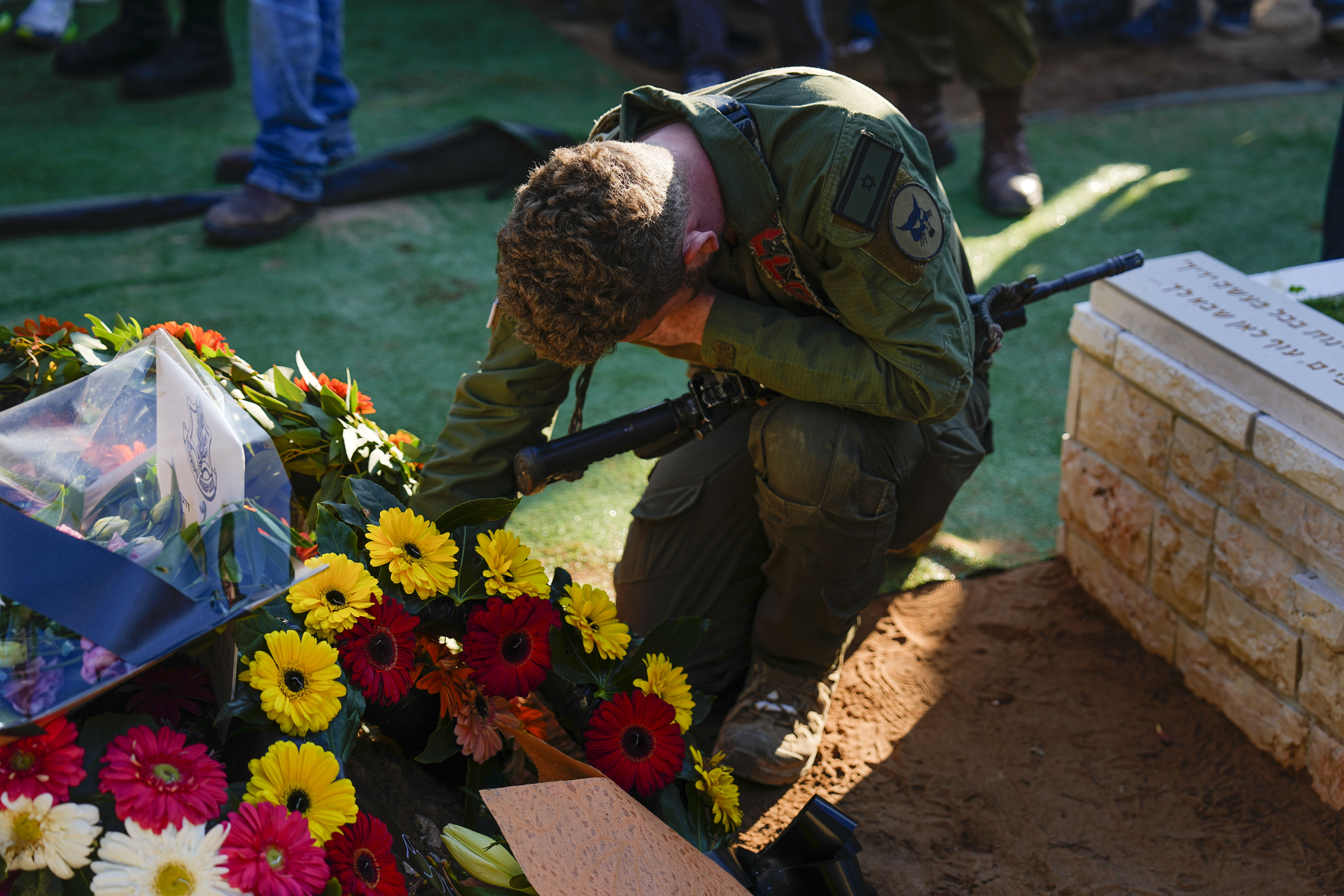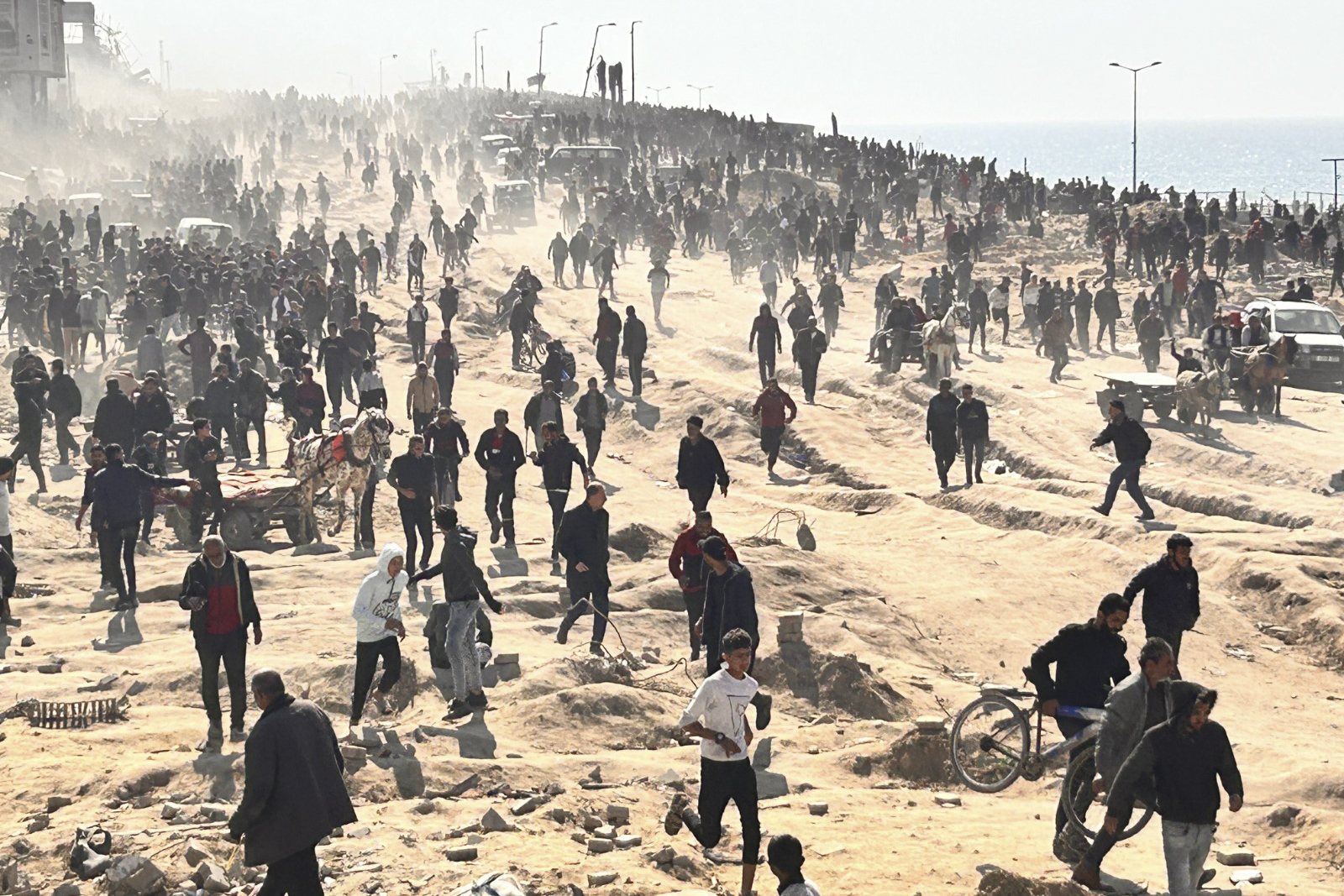Israeli troops fired on a large crowd of Palestinians racing to pull food off an aid convoy in Gaza City on Thursday, witnesses said. More than 100 people were killed in the chaos, bringing the death toll since the start of the Israel-Hamas war to more than 30,000, according to health officials.
The violence was quickly condemned by Arab countries, and U.S. President Joe Biden expressed concern it would add to the difficulty of negotiating a cease-fire in the nearly five-month conflict.
The Gaza City area was among the first targets of Israel’s air, sea and ground offensive, launched in response to Hamas’ Oct. 7 attack into Israel.
While many Palestinians fled the invasion in the north of the enclave, a few hundred thousand are believed to remain in the largely devastated and isolated region. Trucks carrying food reached northern Gaza this week, the first major aid delivery there in a month, officials said.
We've got the news you need to know to start your day. Sign up for the First & 4Most morning newsletter — delivered to your inbox daily. >Sign up here.
Aid groups say it has become nearly impossible to deliver supplies in most of Gaza because of the difficulty of coordinating with the Israeli military, ongoing hostilities and the breakdown of public order, with crowds of desperate people overwhelming aid convoys. The U.N. says a quarter of Gaza’s 2.3 million Palestinians face starvation; around 80% have fled their homes.
Israeli officials acknowledged their troops opened fire on the Gaza City crowd Thursday, saying they did so after the crowd approached in a threatening way. The officials insisted on anonymity to give details about what happened, after the Israeli military said in a statement that “dozens were killed and injured from pushing, trampling and being run over by the trucks.”
Kamel Abu Nahel, who was being treated for a gunshot wound at Shifa Hospital, said he and others went to the distribution point in the middle of the night because they heard there would be a delivery of food. “We’ve been eating animal feed for two months,” he said.
He said Israeli troops opened fire on the crowd as people pulled boxes of flour and canned goods off the trucks, causing them to scatter, with some hiding under cars. After the shooting stopped, people went back to the trucks, and the soldiers opened fire again. He was shot in the leg and fell over, and then a truck ran over his leg as it sped off, he said.
At least 112 people were killed, Health Ministry spokesman Ashraf al-Qidra said. The Health Ministry described it as a “massacre.”
Saudi Arabia, Egypt, and Jordan accused Israel of targeting civilians in the incident. In separate statements, they called for increased safe passages for humanitarian aid. They also urged the international community to take decisive action to pressure Israel to abide by international law and to reach an agreement for an immediate cease-fire.
The increasing alarm over hunger across Gaza has fueled international calls for a cease-fire, and the U.S., Egypt and Qatar are working to secure a deal between Israel and Hamas for a pause in fighting and the release of some of the hostages Hamas took during its Oct. 7 attack.
Mediators hope to reach an agreement before the Muslim holy month of Ramadan starts around March 10. But so far, Israel and Hamas have remained far apart in public on their demands.
Biden had earlier expressed hope that a deal would be done by Monday. He said Thursday that looked unlikely.
“Hope springs eternal,” Biden told reporters. “I was on the telephone with people from the region. Probably not by Monday, but I’m hopeful.”
When asked if the bloodshed in Gaza City on Thursday would complicate those efforts, he said, “I know it will.”
In a statement condemning Thursday’s attack, Hamas said it would not allow the negotiations “to be a cover for the enemy to continue its crimes.”
Medics arriving at the scene of the bloodshed Thursday found “dozens or hundreds” lying on the ground, according to Fares Afana, the head of the ambulance service at Kamal Adwan Hospital. He said there were not enough ambulances to collect all the dead and wounded and that some were being brought to hospitals in donkey carts.
Another man in the crowd — who gave only his first name, Ahmad, as he was being treated at a hospital for gunshot wounds to the arm and leg — said he waited for two hours before someone with a horse-drawn cart had room to take him to Shifa.
The violence came more than a month after witnesses and health officials in Gaza accused Israeli troops of firing on a previous aid distribution in Gaza City, killing at least 20 people.
Dr. Mohammed Salha, the acting director of the Al-Awda Hospital, said the facility received 161 wounded patients, most of whom appeared to have been shot. He said the hospital can perform only the most essential surgeries because it is running out of fuel to power emergency generators.
The Health Ministry said the Palestinian death toll from the war has climbed to 30,035, with another 70,457 wounded. The agency does not differentiate between civilians and combatants in its figures but says women and children make up around two-thirds of those killed.
The ministry, which is part of the Hamas-run government in Gaza, maintains detailed records of casualties. Its counts from previous wars have largely matched those of the U.N., independent experts and even Israel’s own tallies.
The Hamas attack into southern Israel that ignited the war killed 1,200 people, mostly civilians, and the militants seized around 250 hostages. Hamas and other militants are still holding around 100 hostages and the remains of about 30 more, after releasing most of the other captives during a November cease-fire.
Violence has also surged across the West Bank since Oct. 7. An attacker shot and killed two Israelis at a gas station in the settlement of Eli on Thursday, according to the Israeli military. The attacker was killed, the military said.
Meanwhile, U.N. officials have warned of further mass casualties if Israel follows through on vows to attack the southernmost city of Rafah, where more than half of Gaza’s population of 2.3 million has taken refuge. They also say a Rafah offensive could decimate what remains of aid operations.
Hundreds of thousands of Palestinians are believed to remain in northern Gaza despite Israeli orders to evacuate the area in October, and many have been reduced to eating animal fodder to survive. The U.N. says 1 in 6 children under 2 in the north suffer from acute malnutrition and wasting.
COGAT, the Israeli military body in charge of Palestinian civilian affairs, said around 50 aid trucks entered northern Gaza this week. It was unclear who delivered the aid. Some countries have resorted to airdrops in recent days.
The World Food Program said earlier this month that it was pausing deliveries to the north because of the growing chaos, after desperate Palestinians emptied a convoy while it was en route.
Since launching its assault on Gaza following Hamas’ Oct. 7 attack, Israel has barred entry of food, water, medicine and other supplies, except for a trickle of aid entering the south from Egypt at the Rafah crossing and Israel’s Kerem Shalom crossing. Despite international calls to allow in more aid, the number of supply trucks is far less than the 500 that came in daily before the war.
___
Chehayeb reported from Beirut and Lidman from Tel Aviv, Israel.



